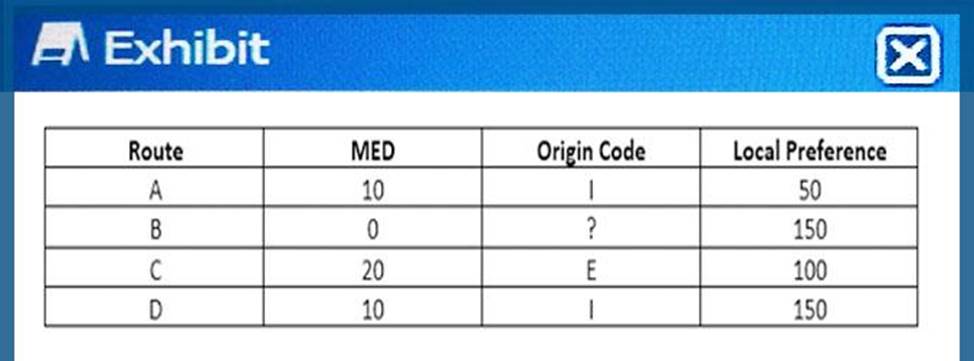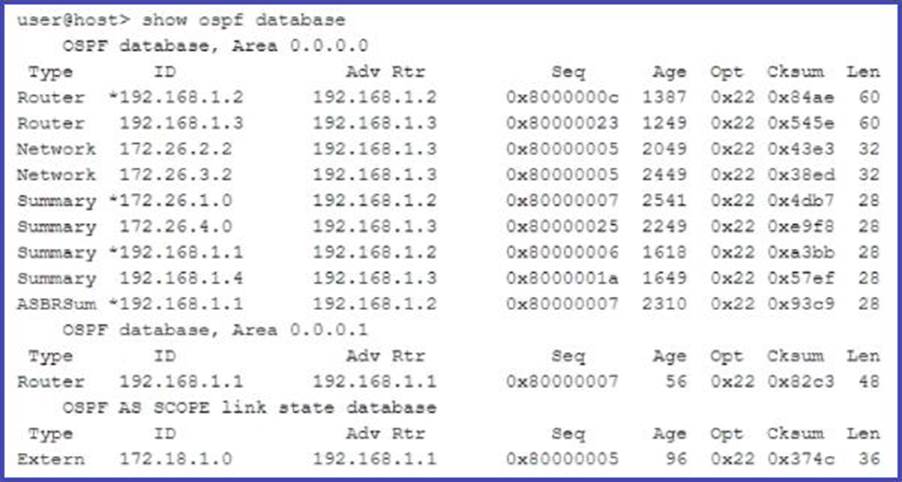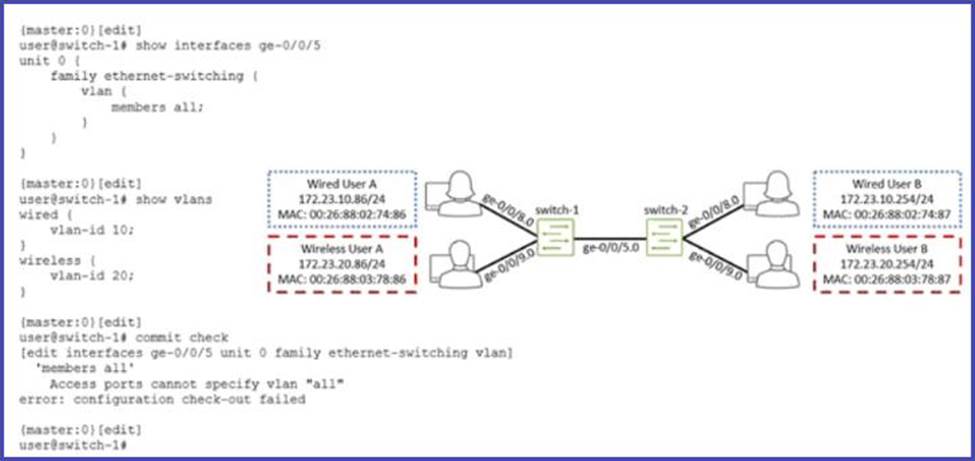Juniper JN0-349 Enterprise Routing and Switching, Specialist (JNCIS-ENT) Online Training
Juniper JN0-349 Online Training
The questions for JN0-349 were last updated at Dec 14,2025.
- Exam Code: JN0-349
- Exam Name: Enterprise Routing and Switching, Specialist (JNCIS-ENT)
- Certification Provider: Juniper
- Latest update: Dec 14,2025
Which two statements about aggregate routes in the Junos OS are correct? (Choose two.)
- A . An aggregate route has a default next hop of an IP address.
- B . An aggregate route always shows as active in the routing table.
- C . An active route can contribute only to a single aggregate route.
- D . Only one aggregate route can be configured for each destination prefix.
Which mechanism is used to share routes between routing tables?
- A . RIB groups
- B . routing instances
- C . forwarding instances
- D . filter-based forwarding
Which two statements about a unified ISSU are correct? (Choose two.)
- A . It requires that Bidirectional Forwarding Detection be disabled.
- B . It requires that graceful Routing Engine switchover be enabled.
- C . It is only supported on platforms with redundant control planes.
- D . It is only supported on platforms with redundant power supplies.
The next hop for the route is not reachable.
In this scenario, what are two ways that BGP handles this route? (Choose two.)
- A . The route is placed into the forwarding table as an inactive route.
- B . The route is not placed into the forwarding table.
- C . The route is placed into the routing table as a hidden route.
- D . The route is placed into the forwarding table as a hidden route.
Click the Exhibit button.

A routing table contains multiple BGP routes to the same destination prefix. The route preference is the same for each route.
Referring to the exhibit, which route would be selected?
- A . route B
- B . route D
- C . route A
- D . route C
Click the Exhibit button.

Referring to the output shown in the exhibit, which two statements are correct? (Choose two.)
- A . The device is not an ABR.
- B . The device originated the 192.168.1.2 database entry.
- C . The device originated the 192.168.1.1 database entry.
- D . The device is an ABR.
Click the Exhibit button.

You are building a network and make some configuration changes. While trying to validate these changes, you receive the error shown in the exhibit.
How would you solve this problem?
- A . You must create a new VLAN called all using the VLAN ID of 30.
- B . You must configure the ge-0/0/5.0 interface with family inet instead of family ethernet-switching.
- C . You must configure the port mode as trunk on the ge-0/0/5.0 interface.
- D . You must create two sub-interfaces on ge-0/0/5 with the appropriate VLAN member assigned to each.
Click the Exhibit button.
Referring to the exhibit, which type of route is displayed?
- A . martian
- B . static
- C . generate
- D . aggregate
By default, how long will a learned MAC address be retained in the bridge table on an EX Series switch?
- A . 600 seconds
- B . 3600 seconds
- C . 300 seconds
- D . 1800 seconds
Which two statements about BPDU protection are correct? (Choose two.)
- A . By default, you must manually clear a BPDU error condition when using BPDU protection.
- B . BPDU protection prevents unauthorized switches from connecting to and participating in your spanning tree topology.
- C . By default, BPDU protection prevents the root bridge from communicating with other STP members unless it receives a superior BPDU first.
- D . BPDU protection requires that STP or RSTP is configured on the switch.
Latest JN0-349 Dumps Valid Version with 92 Q&As
Latest And Valid Q&A | Instant Download | Once Fail, Full Refund

